The Saga of a Rock Wren family.
In early April Eric Setterberg found a most unusual Rock Wren nest in Emigrant Lake County Park. He saw a pair taking nesting materials into an open-ended steel pipe that serves as a swing bar on the entrance gate to the park.
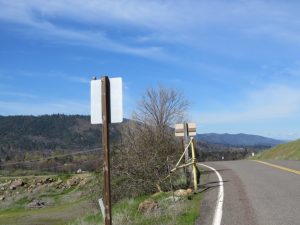
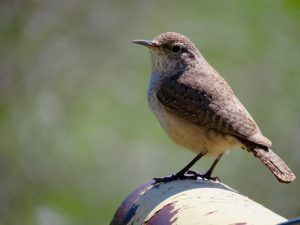
Very little is known about this secretive wren, as it nests in dry, rocky areas and often deep in a rock crevice; and has never been reported nesting in a structure above ground. In this case the nest was adapted to a 3 inch pipe.
Male Rock Wrens have a singular behavior during courtship they build a pebble-lined path to the nest. I have not seen this, although I did many searches in my years in the Anza-Borrego Desert.
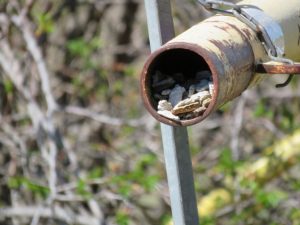

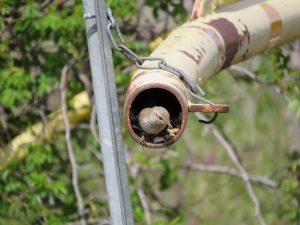
Both swing bars are open-ended and when I visited I noticed that the other pipe also had stones. It had also been used, although there were no signs of current activity. (When we excavated the pipes after the nesting season we found an old swallow nest with many Canada Goose feathers and a mummified chick deep in one pipe. So it has been long used but never noticed by birders.)
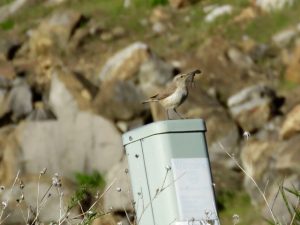
Hatching took place at the end of the month, probably around April 25, and the parents fed diligently, bringing mainly insects including crickets. On May 1 one of them brought a small lizard, another observation not previously recorded. We were very fortunate that Eric had his camera ready and got a wonderful photo.
The food-bringer entered the nest and flew out immediately, indicating that the lizard was dropped intact for the chicks, who were about a week old, to render palatable. How they did this at such an early age is imponderable. This was another first, an observation not recorded in the literature.
Several days later when Eric checked the nest there had been a shocking development. He found both parents dead on the road and flattened by cars. It was the first hot day of the year and traffic was heavy. We surmised that there were many dead insects on the road and the birds lost their survival instincts while pursuing food for their chicks.
The thought of the nestlings starving to death drove Eric and his partner Laurel to rescue them, even knowing knew there was a slim chance for their survival.
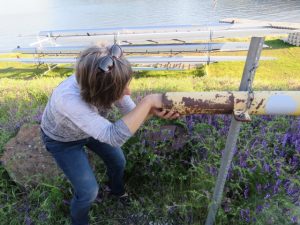
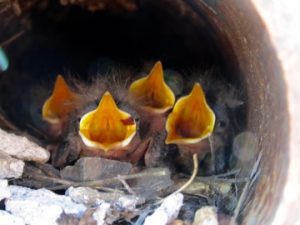
Equipped with a small cardboard box lined with paper towels and a jar of live bugs, they set out on a rescue mission. As they approached the pipe they could hear the nestlings calling. They were more they a foot deep into the pipe, but Laurel was able to get her arm in and gently drag them out one by one. There were 5 altogether, but one died later that night. Once secure in their temporary cardboard box nest, they were fed the bugs, then taken to a temporary shelter for injured birds.
Next morning Shannon Rio took the 4 surviving chicks to Badger Run, a wildlife rehab center in Klamath Falls, 50 miles over the Cascades. The people there are extraordinarily dedicated, skilled, and compassionate. (And they can use all the help they can get—with no funding from state or federal agencies, they rely on donations and volunteer efforts.) Liz Burton, one of the founding members of Badger Run, began taking the wren chicks along in a box to her “day job” as an insurance agent, because they needed feeding every 15 minutes.
Raising week-old orphan chicks, particularly Passerines, is often a sad and fruitless task, but this case was different. Reports for the next few weeks were all positive. The chicks thrived, started toddling, growing flight feathers and eating live food (crickets and bugs). After 3 they were flying around their cage and very active and eager to be out of it.
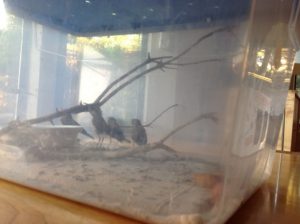
Shannon transported them back to Ashland
along with box of crickets, and I hosted
them overnight , as it was a 92 degree day
and not suitable for release.
At 7AM next morning we took them to the old quarry at the north end of Emigrant Lake Park where there is no road traffic, and where Rock Wrens have been seen intermittently for several years.
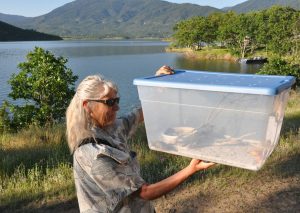
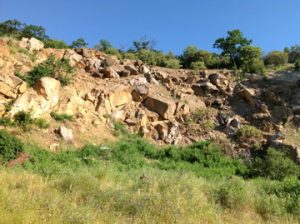
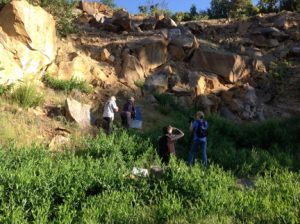
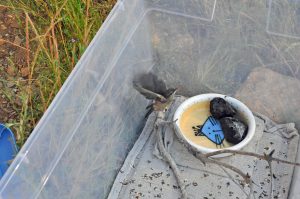
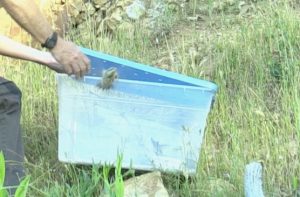
There were two photographers in the release group – Pepper Trail with a good camera for stills, and Jackie Markin with a high-quality video camera. Pepper took the lid off the box and immediately the youngsters flew out; 3 headed up onto the rocks, one went down into the vegetation (tall weeds) at the base of the rock wall. We had no notion as to how they would leave, and it happened so fast the photographers were taken off guard but still managed to get some great photos.
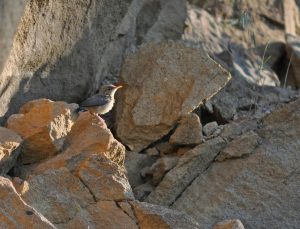
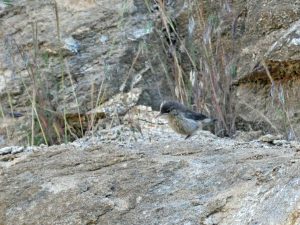
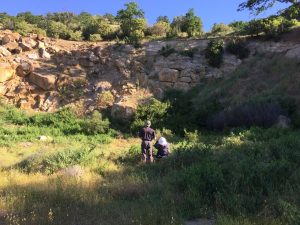
We watched 3 of them for about 30 minutes as they foraged on and around and behind rocks, and one was actually seen catching an insect. They appeared to be adapting easily to their new surroundings. The 4th bird, the one that flew into the weeds, was not seen again. Istayed for another hour but they soon disappeared as it began to get hot.
Next morning Pepper and I arrived at 7AM, hoping to see the fledglings foraging. But there was no sign of them for the next 1 ½ hours. We hope they were exploring and will continue to develop and learn to cope with their new world.
The new observations about nesting will be written up for an ornithological journal, and the chronicle I have reported will go to several local organizations and to the press. It was a rare and exciting adventure with a happy ending.
As an addendum – a Rock Wren pair was seen from a kayak next day on the rock dam at the north end of the lake. They were feeding young. It is apparently a good year for Rock Wrens, and the two nests at Emigrant Lake add a new species to the list of breeding birds at the lake.
